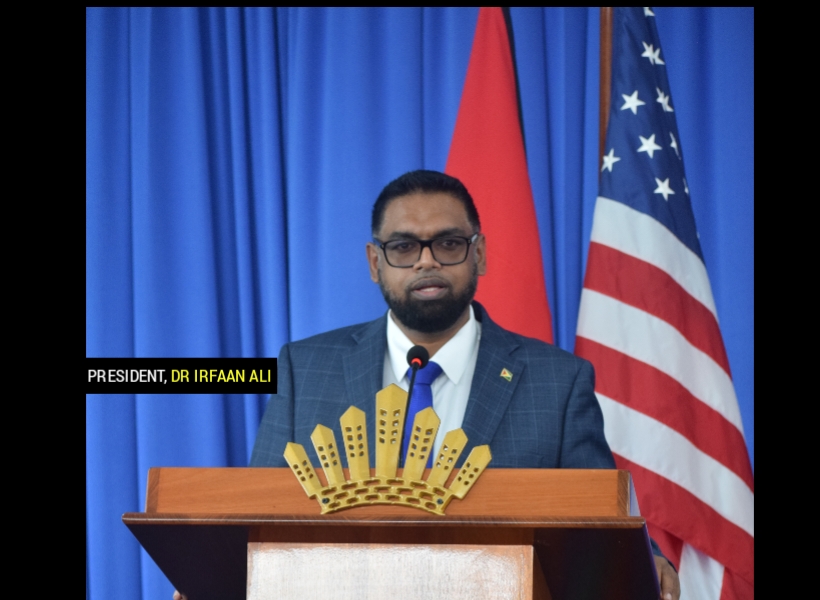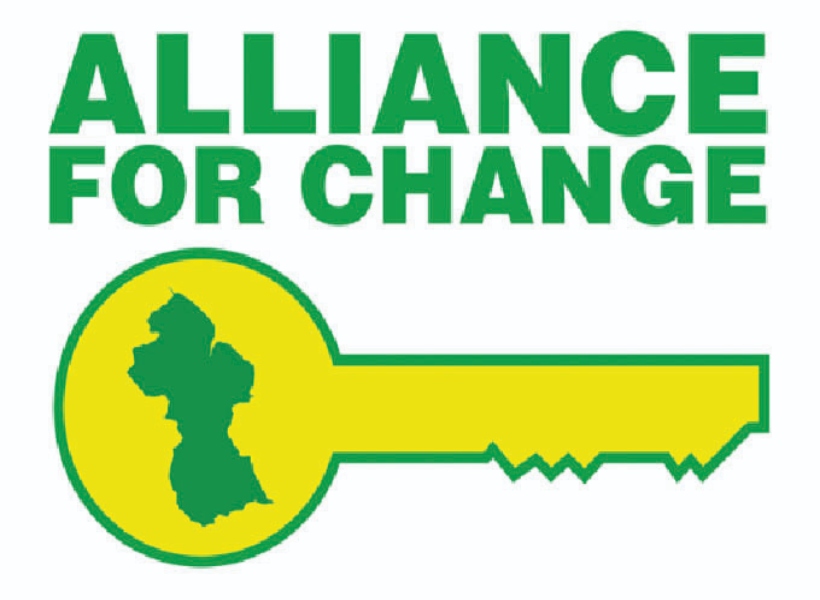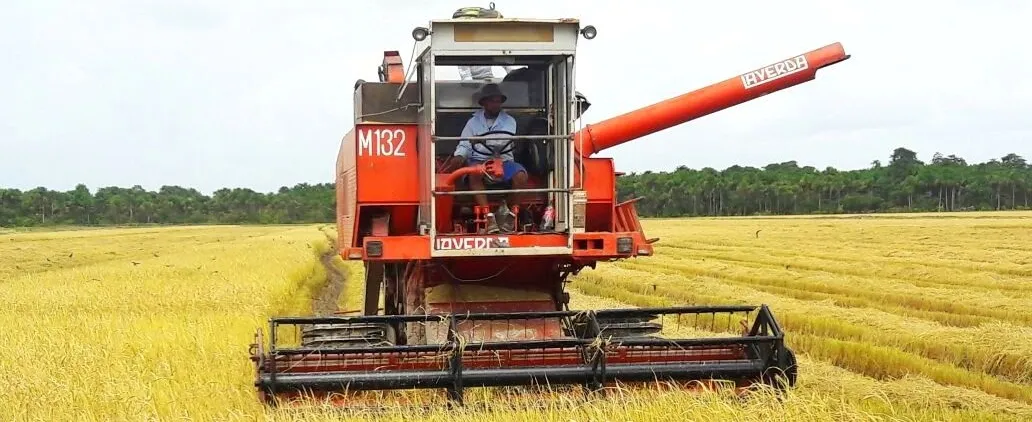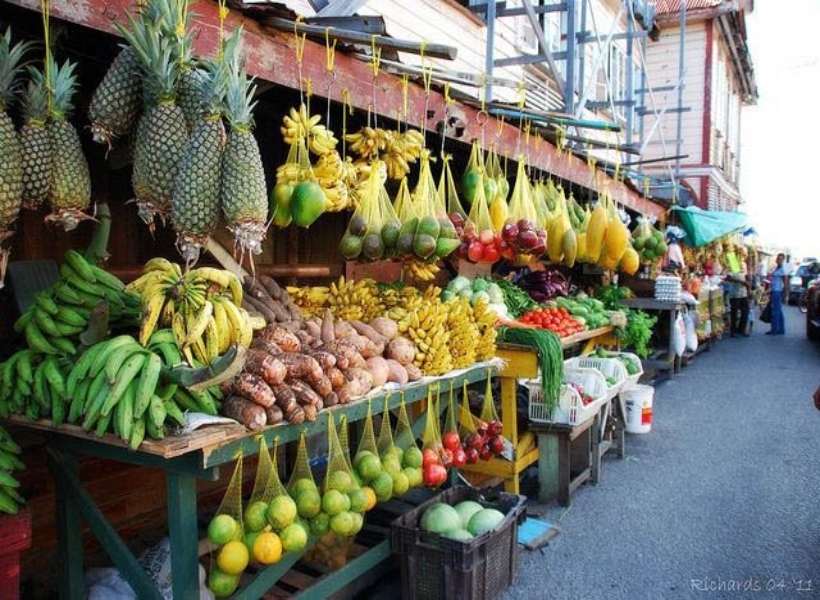President Dr Irfaan Ali said that Guyana is leading the Caribbean Community’s (CARICOM) efforts to reduce its food importation bill by 25% by 2025 through the implementation of transformative projects in the country.
These projects, he explained, will significantly increase the productivity of priority commodities.
The Head of State made the revelation on Friday while delivering remarks virtually at the Launch of the 17th Caribbean Week of Agriculture 2023, being held under the theme, ‘Accelerating Vision 25 by 2025’.

He explained that the transformative projects in Guyana include corn and soya production and other high-value crops.
Similarly, the country has significantly increased coconut production; the productivity of the rice industry and the productivity of the livestock and poultry industries.
The Government is also constructing more shade houses across the country and resuscitating the cocoa and coffee industries among a number of other initiatives.
GUYANA’S DRIVE
President Ali explained that as of the first half of 2023, Guyana has cultivated over 3,000 acres of soybeans and over 1,200 acres of corn.
“We have committed that by the end of 2026, we will have 50,000 acres of land cultivated in corn and soya. This is a co-investment between the developers and the Government.”
When this project is fully matured by 2026 it will be one of the largest investments in the region at approximately US$40m.
Additionally, Guyana recently launched a new programme that will see 2000 acres of land dedicated to the production of black-eyed peas and red beans. This will be an investment of more than US$5m.
“Coconut production is expected to increase by over 200% from 30,000 metric tonnes (MT) in 2020 to 100,000 MT in 2025. There have been over 5,000 newly established acres of coconut cultivated from 2021 January to June 2023 with 10 new coconut nurseries being established from 2020 to 2022. Interestingly and importantly, these nurseries will also serve the needs of CARICOM.”
President Ali added that the production of high-value crops including carrots, broccoli and cauliflower is being prioritised and promoted in Guyana through the establishment of shade houses across the country by farmers.
According to the President, under Guyana’s Agriculture and Innovation Entrepreneurship Programme, over 300 shade houses will be constructed to cultivate and target high-value crops.
“These shade houses and programmes have led to promising results from the cultivation of a small batch of wheat variety. Wheat production trials have been expanded at two locations across Guyana, and the success of these trials can lead to large-scale production of wheat in Guyana.”
Guyana is also in the process of resuscitating cocoa and coffee. So far, coffee and cocoa plants have been distributed in hinterland areas. This programme is expected to significantly increase the production of cocoa and coffee.
Rice continues to be the main staple in Guyana and in many CARICOM countries. Increased productivity is being achieved through research and development into new strains. The introduction of the Guyana Rice Development Board’s (GRDB) 16 varieties in 2020 is one such example. Research is also ongoing on a bio-fortified zinc rice variety.
Additionally, the Seed Paddy Programme of the GRDB was strengthened with the production of approximately 31,500 bags of high-quality seeds. Rice production is expected to increase by 12% from about 560,000 MT in 2021 to more than 625,000 MT in 2023.
In the livestock industry, meat production is expected to increase by 43% from more than 47,000 MT in 2020 to more than 67,000 MT in 2023 while it is projected to grow by 50% in 2025.
“Through collaboration with Barbados, Guyana aims to increase its mutton production, with the Mahaica/Berbice Administrative Region (Region Five) poised to become the livestock capital of CARICOM. As part of this programme, 1,000 Black Belly Sheep are being supplied by the Government of Barbados, with 473 having been received thus far. The 3rd shipment is expected shortly.”
The President added that 13,000 acres of pastures have been developed for cattle farmers for the advancement of the livestock industry while the construction of international standard Porcine and Bovine Abattoirs are underway.
Increasing dairy production is being pursued through the construction of two dairy processing facilities. These two facilities when completed would see an investment of more than US$30m.
“Guyana continues to make major strides in the fisheries sector with the implementation of various initiatives aimed to expand productivity. More than US$2m has been invested in aquaculture development. With 83 ponds constructed and 37 farmers benefiting from pond rehabilitation and improvement of drainage and irrigation facilities. Brackish water shrimp production has increased by almost 500%.”
The production of prawns and the lucrative marine culture cage project are also expected to further boost Guyana’s aquaculture sector. An amount of $173m was allocated in 2023 for the Skeldon Shrimp Project and Guyana will also launch a major marine cage project in its waterways.
The private sector, the President explained, has to also play an important task in advancing CARICOM’s vision.
CARICOM’s Ministerial Task Force on Agriculture and the Caribbean Private Sector Organisation (CPSO) have so far partnered to identify commodities that will receive regional policy support.
These include; poultry, corn, soybeans and rice for feed production, meat (beef, pork and mutton), niche vegetables and coconut products among others.
KEY ROLE OF PRIVATE SECTOR
The Head of State also pointed out that CARICOM’s Ministerial Task Force has recognised the key role of the private sector, and to this end, has partnered with the CARICOM Private Sector Organisation (CPSO) to identify commodities for concentrated regional policy support.
“These priority commodities are poultry meat, corn, soybeans and rice for feed production, meat (beef, pork and mutton), niche vegetables and coconut products among others. The region’s ability to produce corn and soybeans is of central importance as part of the process of ramping up the production of poultry, which as you would be aware, is a significant protein source for the region.”
The President explained that thus far, CARICOM has achieved 57% of the production objective towards reducing the food import bill by 25% by 2025, and over the next two years, 1.4 million MT of commodities must be produced to reach the target.
He said he believes the region has the political will and the capacity to “achieve this and produce quality food for our people”.
President Ali also mentioned a number of notable areas of success in the region that contribute to CARICOM’s vision.
These include the announcement of US100m support to the Region from the Government of the United States of America which includes support for the Region’s Food Security efforts; the launch of a Spice Development Programme in Jamaica; the development of a National Shade house Project initiative in Trinidad and Tobago; an increase of 5% in local agricultural production along with a major domestic food security programme in St Lucia; an increase of over 5% in small ruminant production in Dominica; expansion of 100 acres of the agricultural land lease programme and the launch of a new US$7.5m tissue lab facility in Barbados; adoption of a suite of sanitary and phytosanitary legislations in Barbados; and Private Sector Support for a US$110,000 model cattle farm in Trinidad and Tobago.
Furthermore, the President said that the Government of Suriname has announced that they have made 75,000 hectares of land available for large-scale agricultural production, especially in grains.
IMPORTANCE OF CARIBBEAN WEEK OF AGRICULTURE
The President emphasised that the Caribbean Week of Agriculture is an important forum for CARICOM to review not only its successes but to also look towards the future.
“We are committed to lead, and to lead as a good example. As a Region, much more needs to be done, but we are committed to doing this. We are committed to ensuring Vision 25 by 2025 is fully realised. Vision 25 by 2025 represents a tipping point for the Caribbean. Failure must not be contemplated. We must persevere. Paralysis of action will be fatal.”
The President highlighted that there is much more work to be done, and urged the agricultural experts from across the Caribbean to formulate implementable actions on issues such as; resilient food production systems; trade solutions (online platforms, facilitating financial flows, blockchain applications, transportation solutions); new agribusiness opportunities (youth and women involvement); marketplace and product development; secure innovative funding and agri-food investment opportunities.
“As we commence Caribbean Week of Agriculture 2023, let us hold fast to the vision of the 25% by 2025 programme and all that it promises. Let us refocus our efforts; let us recommit to collaborating even stronger in the process, and may CWA 2023, deliver with resounding success, its goals of presenting to stakeholders, new and emerging opportunities in the region.” (Extracted from Press and Publicity Unit, Office of the President)









